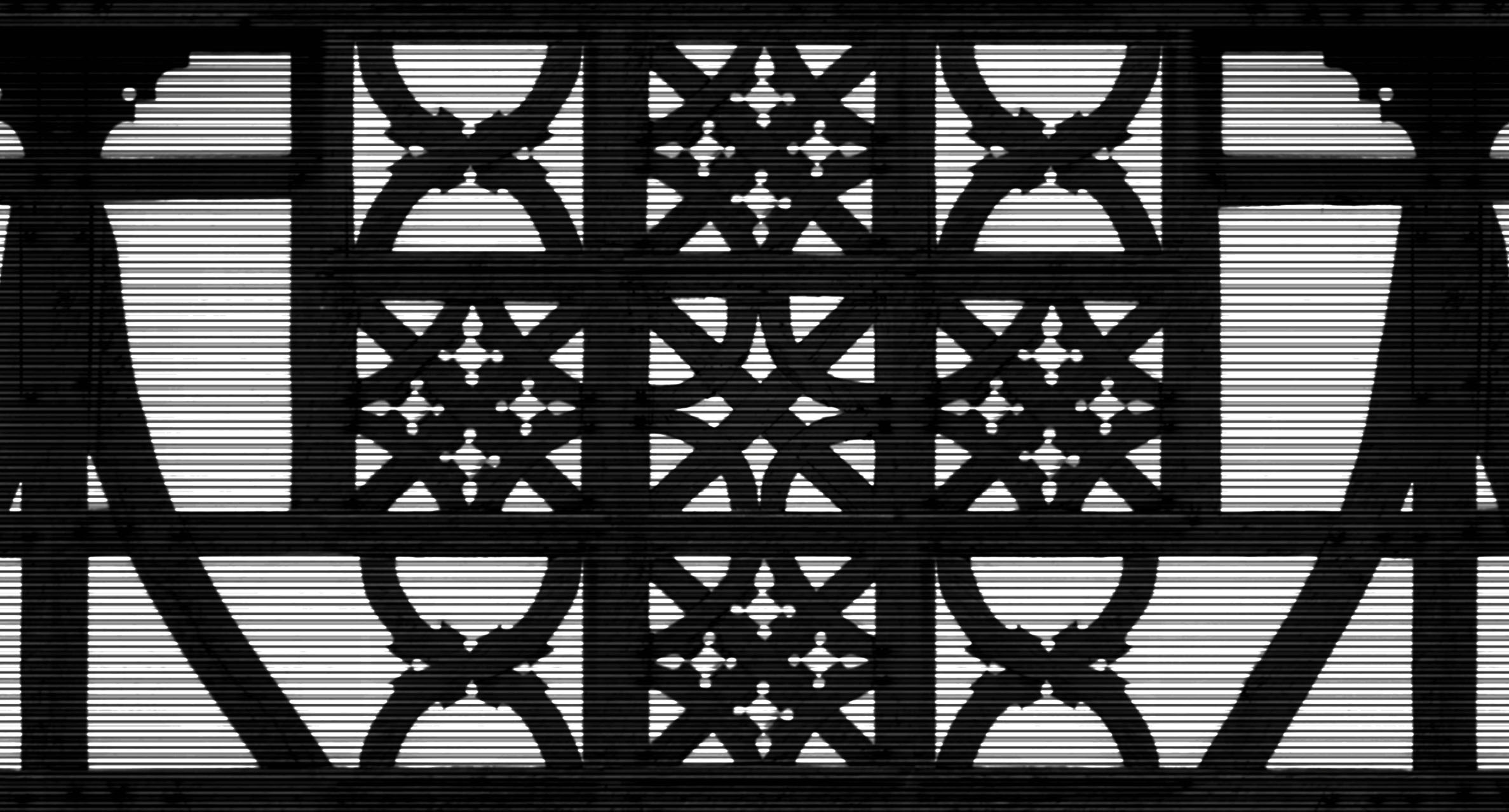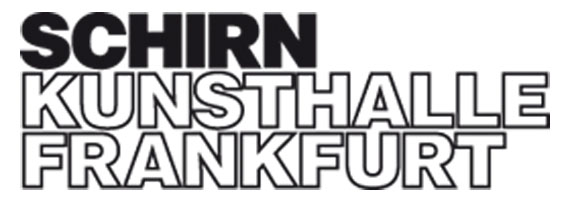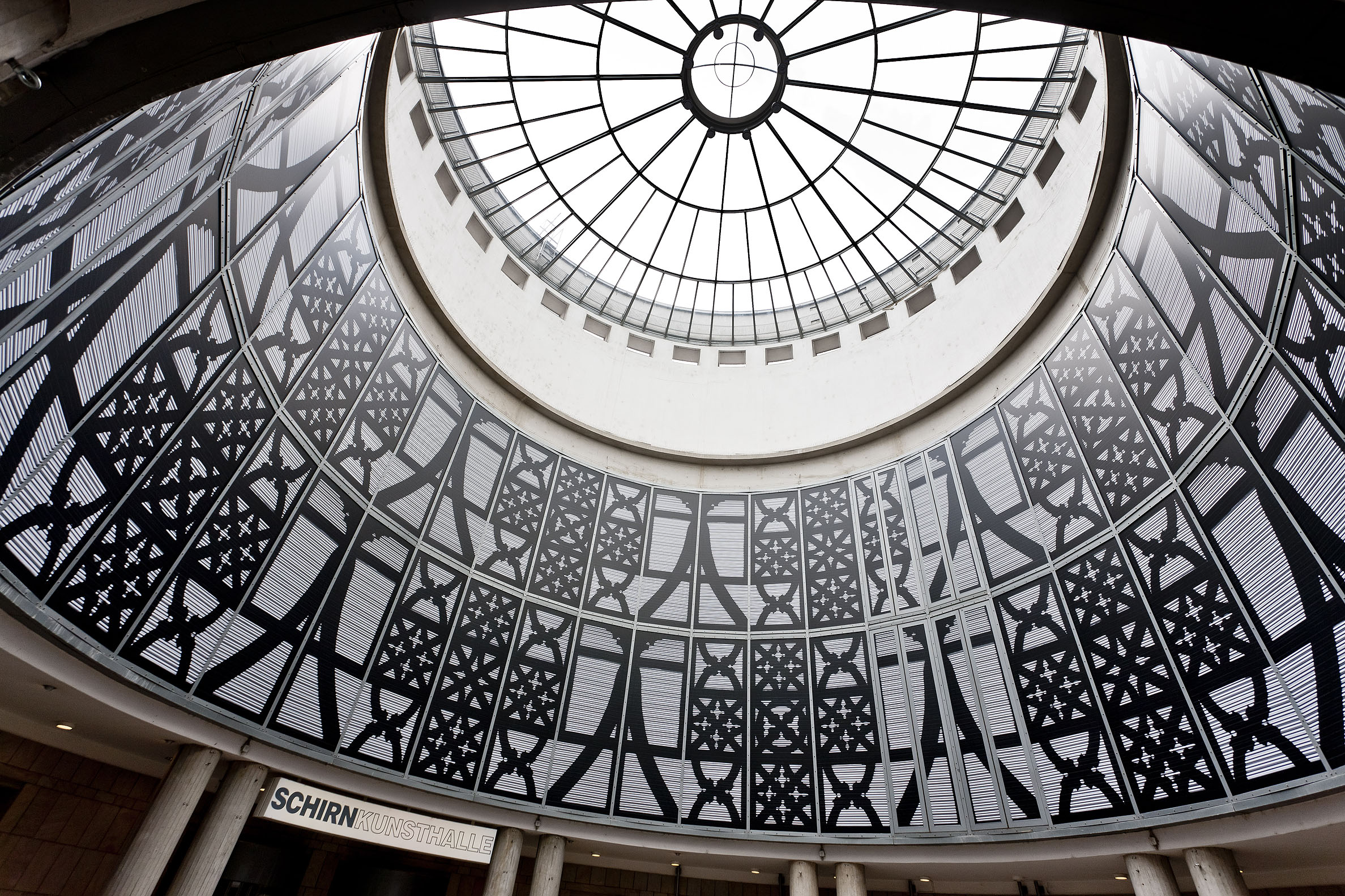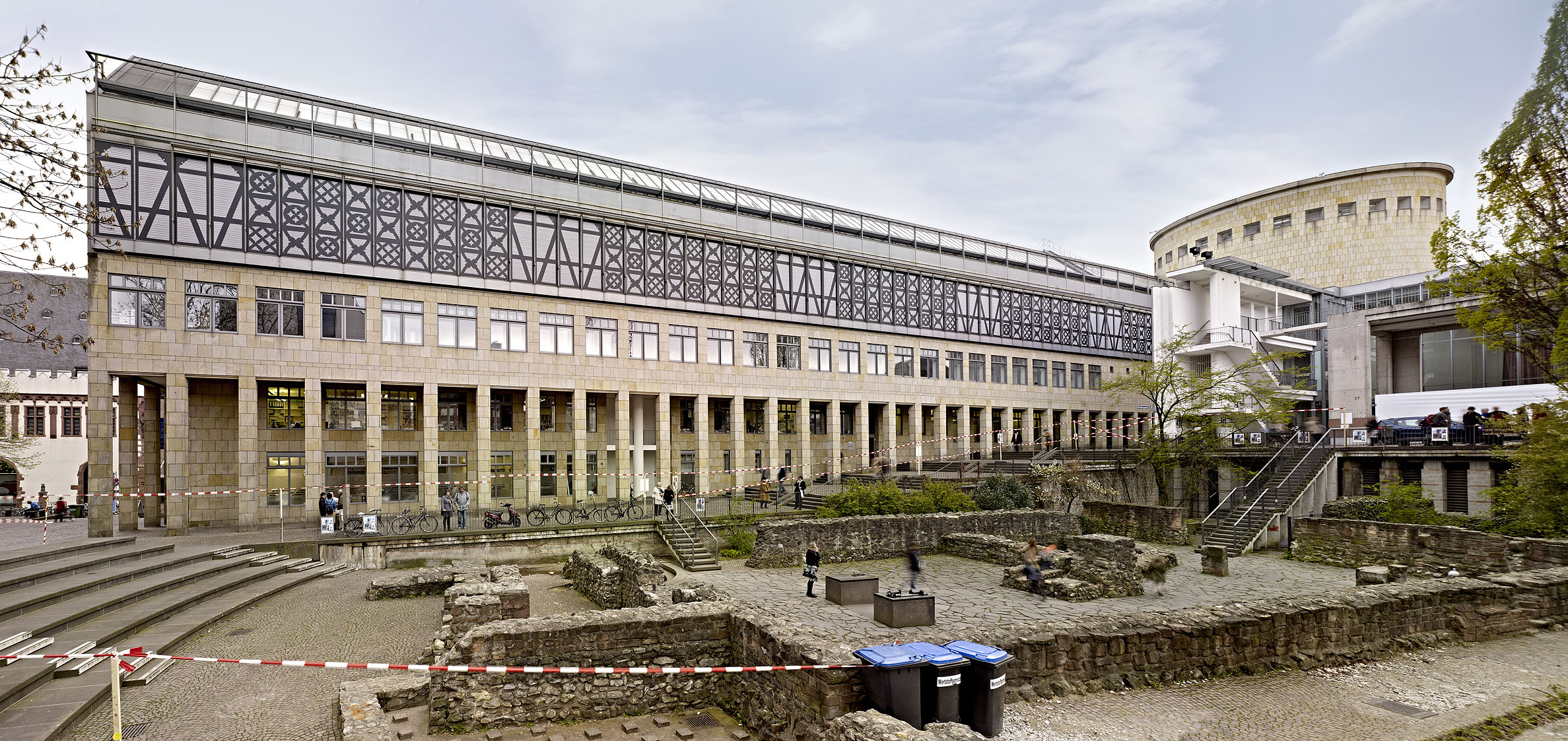
Framework
Simulation rotunda/detail
Simulation Rotunde/Detail
Commissioned by Schirn Kunsthalle Frankfurt
© Courtesy Bettina Pousttchi/Buchmann Galerie Berlin
© Foto: Bettina Pousttchi
Bettina Pousttchi »
Framework
Exhibition: 19 Apr – 17 Jun 2012
Wed 18 Apr 19:00
Schirn Kunsthalle
Römerberg
60311 Frankfurt (Main)

SCHIRN KUNSTHALLE FRANKFURT
Gabriel-Riesser-Weg 3
60325 Frankfurt (Main)
+49 (0)69-2998820
welcome@schirn.de
www.schirn.de
Tue-Sun 10-19; Thu 10-21

Framework
Installation view rotunda
Installationsansicht Rotunde
© Schirn Kunsthalle Frankfurt 2012
Foto: Norbert Miguletz
BETTINA POUSTTCHI. FRAMEWORK
April 19 – June 17, 2012
The Schirn Kunsthalle is showcasing a new work by German-Iranian artist Bettina Pousttchi specifically designed for the exterior of the Schirn. Similar to her well-received installation “Echo” (2009/10) in Berlin – where she resurrected the just demolished Palast der Republik (the former East German parliament building) in the form of a monumental photo installation applied to the façade of the Temporäre Kunsthalle (Temporary Art Hall) – her Frankfurt piece will likewise cover a large portion of the building façade. In “Framework” Pousttchi has taken timber framework elements from two buildings on Frankfurt’s Römer square out of the context of their original façades and combines them into an ornament composed of modules, each measuring one by one meter, infinitely repeated, lending a harmonious rhythm to the overall look of the Schirn. In their interlinking of architecture, sculpture, and photography Pousttchi’s monumental photo installations broaden the traditional understanding of photography. They examine the question of how to approach urban space and memory while at the same time exploring the temporal dimension of architecture.
The exhibition has been made possible by SCHIRN ZEITGENOSSEN.
Bettina Pousttchi, born in Mainz in 1971, lives and works in Berlin. She studied at Kunstakademie Düsseldorf and graduated from the Whitney Independent Studio Program in New York. Her photographic works, videos and sculptures have been exhibited at an international level since the late 1990s, including group exhibitions at, among other venues TENT Rotterdam; Lewis Glucksman Gallery, Cork; Martin-Gropius-Bau, Berlin; Museum on the Seam, Jerusalem; Kunsthalle Detroit; Centro Cultural Recoleta, Buenos Aires; and Schirn Kunsthalle, Frankfurt as part of the exhibition “Die Jugend von Heute” (The Youth of Today) in 2006. In addition to solo exhibitions in Von der Heydt-Kunsthalle Wuppertal (2007), Temporäre Kunsthalle Berlin (2009) and Kunsthalle Basel (2011), Pousttchi also took part in the Venice Biennale in 2003 and 2009.
In her works Bettina Pousttchi reflects on the urban and social changes that mark our times. Her photographs, films, sculptures and installations enable us to experience these fundamental changes to the urban fabric. With “Echo” (2009/10) she resurrected the former Palast der Republik for a period of six months in the form of a photo installation consisting of 970 individual posters applied to the façade of the Temporäre Kunsthalle in Berlin. The former East German parliament building had recently been demolished a mere 30 years after its completion in order to create space for the reconstruction of the Berlin Stadtschloss, which in turn had been torn down in 1950. As such, by means of architecture, in a period of less than 70 years three distinct political systems had erected prestigious structures on Berlin’s Schlossplatz as symbols of the respective era. The artist demonstrated how quickly architecture can lose its ascribed meaning and questioned how a location anchored in the collective memory is perceived, and the role documentary photography plays between personal memory and official written history.
As a starting point the artist now encounters a similarly complex situation with the creation of the façade of Schirn Kunsthalle. At present, parts of the destroyed Old Town are currently being reconstructed on the neighboring land between the cathedral and Römer square. Large parts of an urban structure which had grown homogenously over the course of centuries had been almost completely destroyed during World War II; in the 1970s remaining constructions, or those that were only partly destroyed, were dismantled and replaced by the Technisches Rathaus (Technical town hall). The solid concrete building, its architecture typical of the time of its construction, was to stand for just 35 years. Now individual historical buildings are to be reconstructed and integrated harmoniously with new buildings, which in turn, with regard to volume and materials, are to resemble historical structures.
There are a number of fundamental questions associated with this: What history is being reconstructed here, why, and by whom? What is the half-life of architecture, and who decides when it ends?
With her monumental photo installation “Framework” Bettina Pousttchi addresses questions such as these, while also offering a commentary on the building itself, whose façade she is using. The Schirn is a postmodern building, which opened in 1986 and forms the termination of the area around the cathedral and Römer on the side facing the Main River. For “Framework” Pousttchi studied picture archives and spent over a year photographing the Schirn and the surroundings. The artist took existing framework elements from two half-timbered buildings on the Römer square nearby – the “Schwarzer Stern” (Black star) and “Wertheym” – out of their original context and recombined them in a repetitive structure with a Middle Eastern feel to it. The resulting black-and-white frieze will be applied directly to the sixty-four windows of the rotunda in the Schirn’s entrance and the sixty-seven windows of the entire eastern façade using photo prints.
Bettina Pousttchi will create a perplexing situation with “Framework”. On the Schirn’s façade photographic elements of timber frameworks, originally a purely constructional element, are transformed into pure decor; seeing this applied to a post-Modernist building is for some rather absurd, while others find it a convincing statement. Yet the production process is not so far removed from the way historical buildings are reconstructed; essentially, a historical-looking façade is put on a carcass constructed using cutting-edge methods and using modern materials. This way Pousttchi also highlights the modern-day longing for tradition and historical construction forms that give us new versions of old city palaces and new old towns that may take on a historical appearance, but are of course by no means intended to assume their original function.

Framework
Installation view east facade
Installationsansicht Ostfassade
© Schirn Kunsthalle Frankfurt 2012
Foto: Norbert Miguletz
BETTINA POUSTTCHI. FRAMEWORK
19. April – 17. Juni 2012
Die Schirn Kunsthalle präsentiert die eigens für deren Außenbereich konzipierte neue Arbeit „Framework“ der deutsch-iranischen Künstlerin Bettina Pousttchi. Ähnlich wie bei der viel beachteten Installation „Echo“ (2009/10) in Berlin, wo Pousttchi an der Fassade der Temporären Kunsthalle den kurz zuvor abgerissenen Palast der Republik in Form einer monumentalen Fotoinstallation auferstehen ließ, wird ihre Frankfurter Arbeit großflächig auf die Fassade des Hauses appliziert. Für „Framework“ entnimmt Pousttchi die Fachwerkelemente zweier Gebäude am Frankfurter Römer aus ihrem Zusammenhang der ursprünglichen Fassade und rekombiniert sie in jeweils 1x1 Meter messenden Modulen zu einem Ornament, das sich unendlich wiederholt und die Gesamtansicht der Schirn harmonisch rhythmisiert. Die großflächigen Fotoinstallationen der Künstlerin erweitern das traditionelle Verständnis von Fotografie, indem sie Architektur und Fotografie miteinander verbinden. Sie thematisieren die Frage nach dem Umgang mit dem urbanen Raum und der Erinnerung sowie nach der zeitlichen Dimension von Architektur.
Die Ausstellung wird ermöglicht durch die SCHIRN ZEITGENOSSEN.
Bettina Pousttchi, geboren 1971 in Mainz, lebt und arbeitet in Berlin. Sie studierte an der Kunstakademie Düsseldorf und ist Absolventin des Whitney Independent Studio Program in New York. Ihre Fotoarbeiten, Videos und Skulpturen werden seit Ende der 1990er-Jahre international ausgestellt, unter anderem in Gruppenausstellungen im TENT Rotterdam, in der Lewis Glucksman Gallery, Cork, dem Martin-Gropius-Bau, Berlin, dem Museum on the Seam, Jerusalem, der Kunsthalle Detroit, dem Centro Cultural Recoleta in Buenos Aires sowie der Schirn Kunsthalle Frankfurt in Rahmen der Ausstellung „Die Jugend von heute“ (2006). Neben Einzelausstellungen in der Von der Heydt-Kunsthalle Wuppertal (2007), der Temporären Kunsthalle Berlin (2009) und der Kunsthalle Basel (2011) nahm Pousttchi 2003 und 2009 an der Biennale in Venedig teil.
In ihren Arbeiten reflektiert Bettina Pousttchi urbane und gesellschaftliche Veränderungen unserer Zeit. Ihre Fotografien, Filme, Skulpturen und Installationen machen die fundamentalen Veränderungen der Stadtlandschaft erfahrbar. So ließ sie mit „Echo“ (2009/10) über einen Zeitraum von sechs Monaten den Palast der Republik in Form einer aus 970 Papierpostern bestehenden Fotoinstallation an der Fassade der Temporären Kunsthalle Berlin wiederauferstehen. Das Staatsgebäude der DDR war kurz zuvor nach nur 30 Jahren entfernt worden, um Platz zu schaffen für die Wiedererrichtung des Berliner Stadtschlosses, das wiederum 1950 abgerissen wurde. Mithilfe von Architektur installierten so drei politische Systeme innerhalb von weniger als sieben Jahrzehnten am Schlossplatz ein Symbol für ihre jeweilige Gegenwart. Die Künstlerin führte vor Augen, wie schnell Architektur die ihr zugeschriebene Bedeutung verlieren kann und hinterfragte, wie ein Ort wahrgenommen wird, der im kollektiven Gedächtnis verankert ist, und welche Rolle dokumentarische Fotografie zwischen persönlicher Erinnerung und offizieller Geschichtsschreibung spielt.
Eine ähnlich komplexe Situation bietet sich der Künstlerin nun als Ausgangspunkt bei der Gestaltung der Fassade der Schirn Kunsthalle. Auf dem unmittelbar benachbarten Areal zwischen Dom und Römer wird derzeit die zerstörte Altstadt teilweise rekonstruiert. Ein über Jahrhunderte homogen gewachsenes städtebauliches Gefüge wurde zu großen Teilen im Zweiten Weltkrieg zerstört; erhaltene bzw. teilzerstörte historische Bauten wurden abgetragen und in den 1970er-Jahren durch das Technische Rathaus ersetzt. Der massive Betonbau mit seiner zeittypischen Architektur sollte nur 35 Jahre Bestand haben. Nun sollen einzelne historische Bauten rekonstruiert und in Einklang mit Neubauten gebracht werden, die sich in ihren Kubaturen und Materialien historischen Bauformen anzunähern haben.
Damit einhergehen grundsätzliche Fragen: Welche Geschichte wird hier zu welchem Zweck und von wem rekonstruiert? Wie lang ist die Halbwertszeit von Architektur, und wer entscheidet darüber, wann diese endet?
Bettina Pousttchi greift Fragen dieser Art mit ihrer monumentalen Fotoinstallation „Framework“ auf, bietet aber auch einen Kommentar zum Gebäude selbst, dessen Fassade sie bespielt. Die Schirn ist ein postmoderner Bau, der 1986 eröffnet wurde und das Areal Dom-Römer zum Main hin abschließt. Für „Framework“ hat Pousttchi Bildarchive gesichtet und über ein Jahr lang die Schirn und ihre unmittelbare Nachbarschaft fotografiert. Dabei hat die Künstlerin bestehende Fachwerkelemente zweier nahe gelegener Fachwerkhäuser am Römerberg – der Häuser „Schwarzer Stern“ und „Wertheym“ – aus ihrem ursprünglichen Zusammenhang genommen und mit einer an orientalischer Ornamentik angelehnten, repetitiven Struktur neu kombiniert. Der daraus entstandene schwarz-weiße Fries wird mit fotografischen Drucken auf die 64 Fenster der Schirn-Rotunde sowie auf die 67 Fenster der gesamten Ostfassade der Kunsthalle appliziert. Das Haus „Schwarzer Stern“ stammt mit seiner fensterreichen Fassade und dem üppigen Fachwerkschmuck ursprünglich aus den 1650er-Jahren. Wie die meisten Gebäude der Altstadt wurde auch der „Schwarze Stern“ bei den Bombenangriffen 1944 zerstört und zusammen mit der Ostzeile des Römers, dem Samstagsberg, 1983 rekonstruiert. Dagegen gehört das „Haus Wertheym“ zu den wenigen Bauten, die die Bombenangriffe überstanden haben.
ONLINE-MAGAZIN: www.schirn-magazin.de